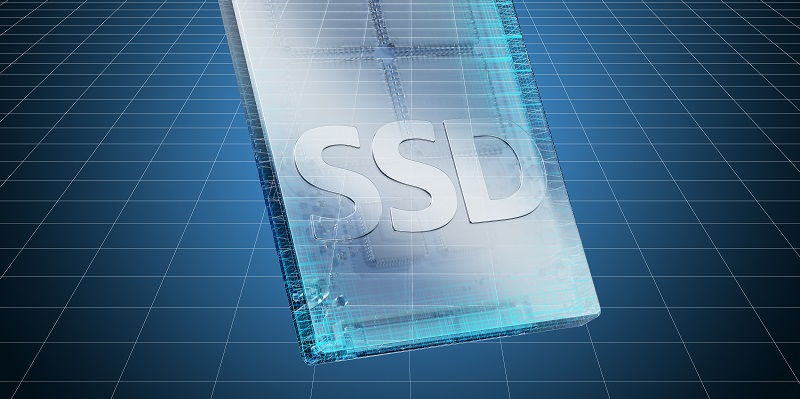As technology continues to advance, the world of storage devices has witnessed major developments in recent years. One such advancement is computational storage SSDs, which have garnered interest and attention from both industry experts and users alike. Let’s delve into the progress of these innovative storage solutions and explore their potential impact on the market.
The Progress of Computational Storage SSDs
The path of computational storage SSDs has not unfolded as early advocates initially expected. While there have been advancements, the pace of progress has been slower compared to initial projections. This can be attributed to various factors such as technological constraints, market dynamics, and the need for software revisions to fully exploit the capabilities of computational storage.
Success of Fixed-Function Devices in Computational Storage Architecture
A key area where computational storage has found success is with fixed-function devices. These devices, which lack user programmability, leverage the fundamental architecture of computational storage. By offloading specific tasks such as compression, decompression, and video processing, fixed-function devices have emerged as a reliable solution for improving storage performance and efficiency.
Disproportional Improvements in Constrained Systems
While computational storage SSDs offer solid speed benefits, their impact may vary depending on the constraints of the system. In scenarios where there are limitations on network bandwidth and computational resources, the improvements brought by such drives might be disproportionately greater. Understanding these dynamics is crucial for effectively integrating computational storage into various environments and optimizing overall system performance.
IBM’s FlashCore Module: An SSD with Internal Compression and Decompression
IBM has taken a significant step in the field of computational storage with its FlashCore Module. This innovative SSD incorporates internal compression and decompression capabilities. These tasks are traditionally performed by software. By integrating these features into the hardware itself, IBM aims to enhance data compression efficiency, reduce latency, and improve overall storage performance.
Flexxon’s SSD: Monitoring Disk Access Patterns for Malware Attacks
Keeping data secure is a top priority for organizations today. Flexxon has developed an exceptional SSD that not only offers storage capacity but also serves as a proactive defense against malware attacks. By monitoring disk access patterns, this smart SSD can identify potential threats and protect data from unauthorized access, providing an additional layer of security for critical information.
Samsung’s SmartSSD Platform with Xilinx: Opening Doors to Computational Storage Designs
Samsung, in collaboration with Xilinx, has introduced the SmartSSD platform, opening up new avenues for computational storage designs. This platform empowers users to create and implement various computational storage architectures, facilitating tailored solutions for different workloads and applications. The flexibility offered by SmartSSD holds immense potential for advancing computational storage technology.
Netint’s Codensity D400 Series SSDs: Internal Video Compression
Netint’s Codensity D400 Series SSDs excel in video-centric applications, boasting internal video compression capabilities. By performing compression tasks directly within the SSD, these devices significantly reduce the burden on system resources, enhance video processing efficiency, and pave the way for seamless video streaming and content delivery.
Recognizing the growing importance of computational storage, the Storage Networking Industry Association (SNIA) has standardized computational storage devices into three basic types. This standardization provides clarity and a common framework for developers, vendors, and users, facilitating easier adoption and integration of computational storage solutions into existing infrastructures.
ScaleFlux’s Computational Storage Drives: Programmable and Fixed-Function Options
ScaleFlux, a leading player in the computational storage market, offers two types of computational storage drives. The first is a programmable drive that provides users with the flexibility to customize and optimize storage tasks according to their specific requirements. The second is a fixed-function drive that specializes in offloading specific tasks, delivering predictable performance and efficiency.
Challenges in Market Acceptance Due to Software Revision Requirements
Despite the numerous advantages that computational storage offers, one significant challenge lies in the need to revise software to fully capitalize on its capabilities. Adapting existing software infrastructures can be a time-consuming and complex process, which often acts as a barrier to the widespread adoption of computational storage. Overcoming this challenge will require industry collaboration and effective software development strategies.
Computational storage SSDs have made notable progress, although not at the speed initially anticipated. The success of fixed-function devices, advancements like IBM’s FlashCore Module, Flexxon’s malware detection SSD, and Samsung’s SmartSSD platform demonstrate the industry’s commitment to pushing the boundaries of storage technology. While challenges remain, standardization efforts by SNIA and companies such as Netint and ScaleFlux are paving the way for wider adoption. As the industry continues to evolve, computational storage holds the promise of transforming storage systems and unlocking new possibilities for data-intensive applications in the future.

